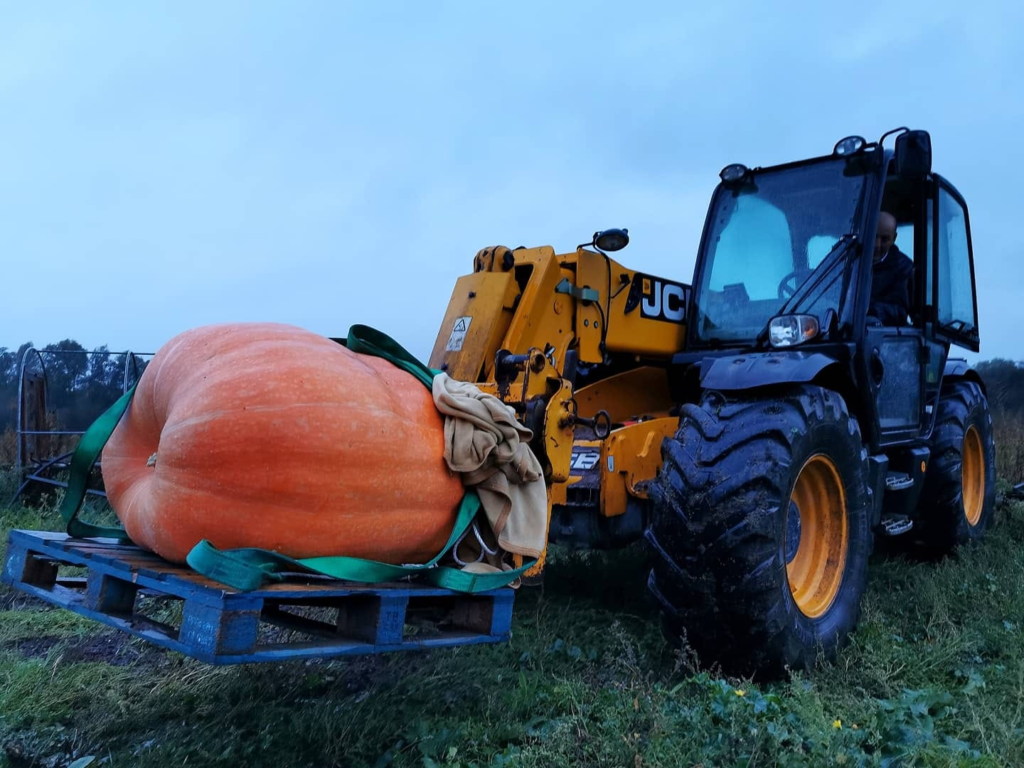How to grow a giant pumpkin
Stuart and Ian Paton are undoubtedly the UK’s best growers of giant pumpkins. In 2020 they grew a pumpkin that weighed over 2500 pounds.
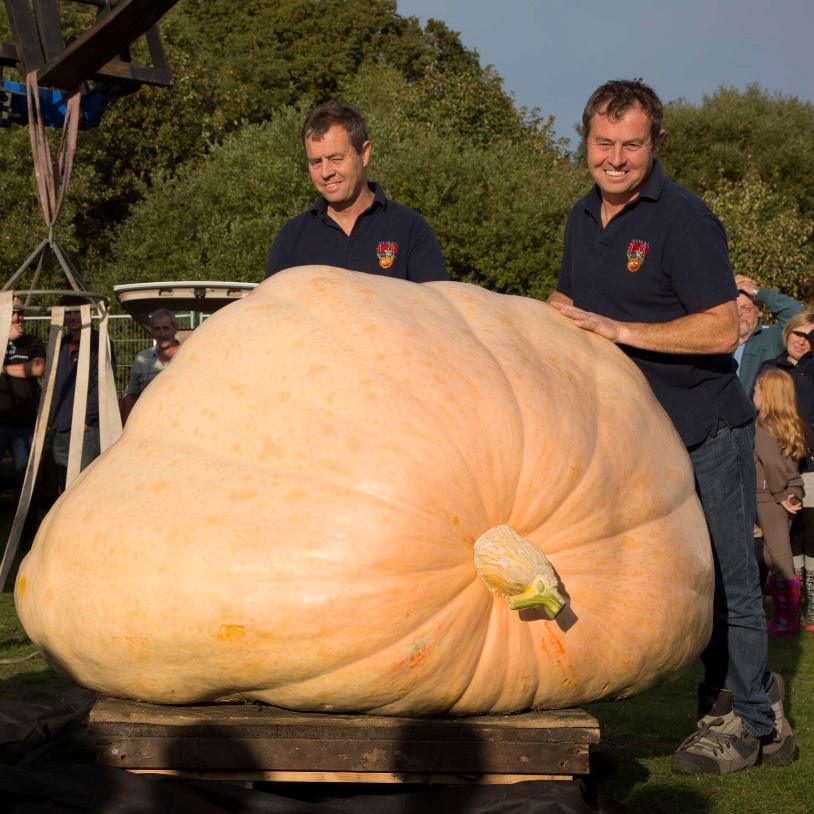

If you ask 10 competitive pumpkin growers how to grow a giant pumpkin, you are likely to get 10 different answers. Each individual has their own tips, soil structure and feed to maximise their yield. There is however, a consistent message on the three basic tips below to get you well on the way to a prize winner. Above all else, you need good seed, good soil, and good luck.
Good seed. If you want to grow a world-record pumpkin or a show winner, you need a seed with proven genetics.
Good soil Pumpkins are hungry plants and require the right balance of plant nutrients (nitrogen, phosphorus and potassium), as well as many minor nutrients like calcium and magnesium and other trace elements.
The key for big growth is the soil preparation. It is important to incorporate plenty of organic matter incorporated, such as well rotted cow manure in the Autumn months. Use chicken manure sparingly and only in the Autumn as this is rich in nitrogen. Cover crops of winter rye and field beans, planted in early September and turned into the ground in the spring, are also great additions for the soil. The soil pH should be between 6.5 and 6.8.
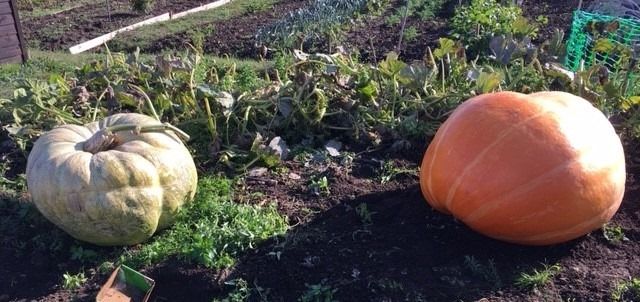
Good luck. Try your chances and make sure you have plenty of space. It is possible for a first attempt grower to achieve a pumpkin weighing over 200 pounds. Along with good advice from fellow pumpkin growers, it is possible to grow a pumpkin over 500 pounds with minimal effort and a lot of luck. With the right preparation and strategy now and in the spring, next year you might just be a contender for the UK Pumpkin Championships
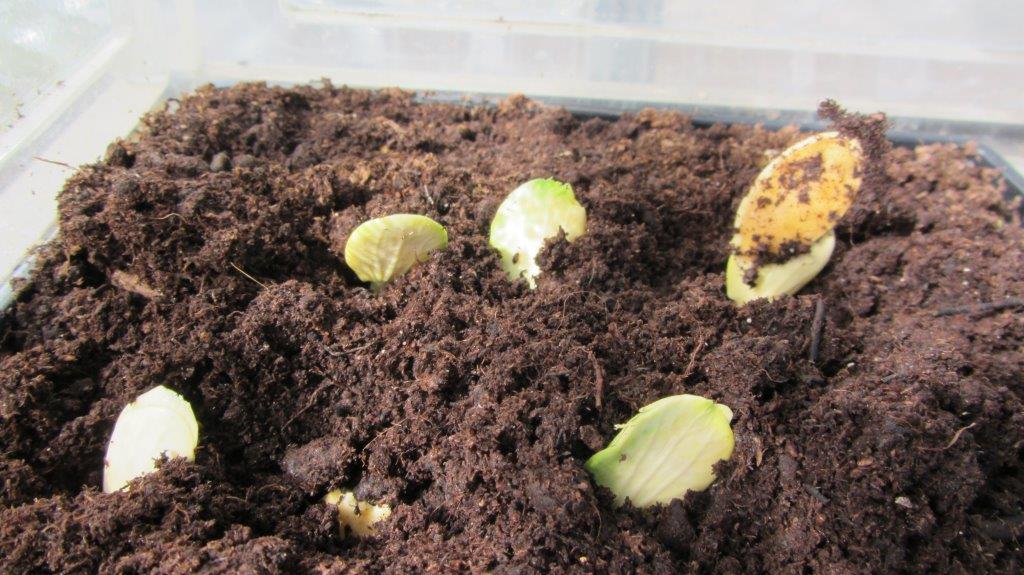
Tips for Success
1. PREPARE THE SOIL. Start with a PH test in October and adjust your PH to between 6.5 and 6.8 by adding sulphur to lower the PH or lime to raise it. Apply three to five square metres of composted manure where you expect to plant next spring. Plant a cover crop of winter rye or field beans in Autumn to be turned under in early spring, broadcasting sufficient amounts to cover your growing area
2. SOW SEEDS. Start seed indoors in a heated propagator in early April. Plant the seed with the pointed end of the seed facing down in a pot. Keep the soil temperature at 70 to 75 oF. Most seeds will emerge within four to five days.
3. TRANSPLANT SEEDLINGS. Transplant seedlings into a larger pot once the first true leaves appear or when roots begin to grow through the base of the pot. (typically, this is seven to 10 days after germination). Handle with care because pumpkins are easily set back during transplanting. If you want to grow a World Record Breaking pumpkin in the UK, you will need to grow it inside a polytunnel/large greenhouse as we are not blessed with consistent temperatures.
4. PROTECT SEEDLINGS. Place a “mini-greenhouse” over the growing area to warm up the soil. Do this three weeks before planting out. Plant out the plants and protect from wind and frost. These mini greenhouses can be simply a rectangular wooden structure made from recycled wood nailed together and covered with a UV resistant clear plastic. Once the young plants grow the mini greenhouse, it can be removed and then use netting to protect the plants from the wind.
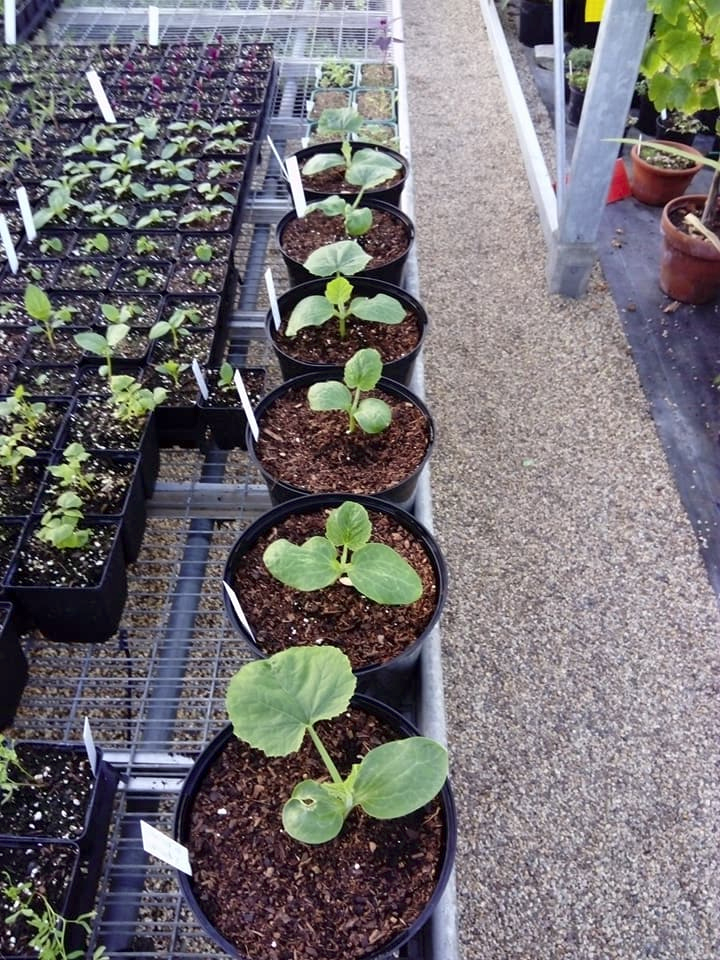
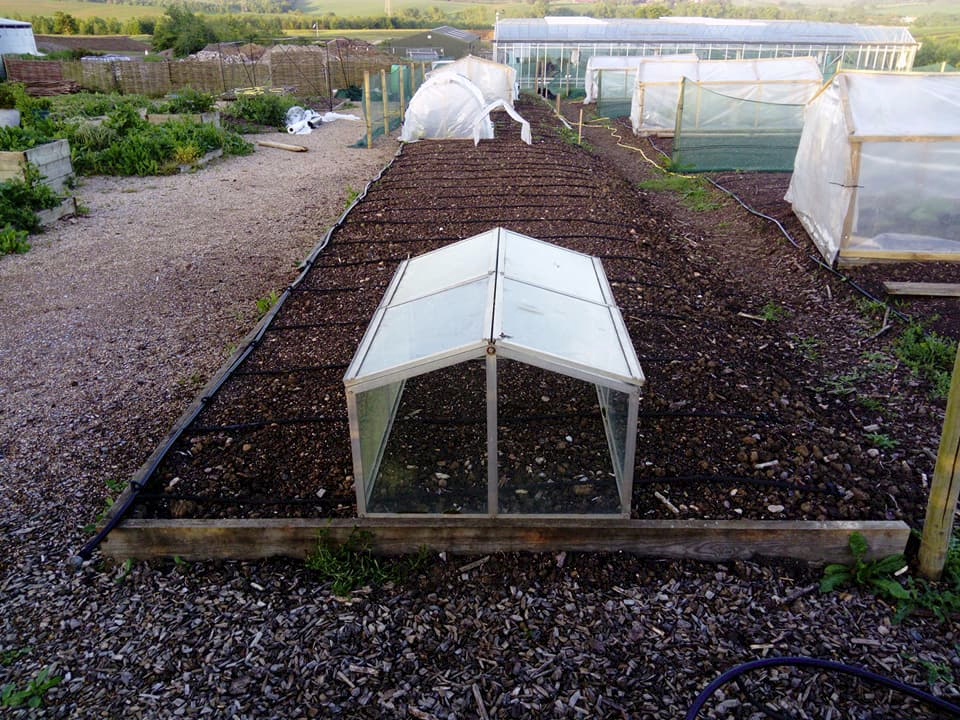
5. POLLINATE FLOWERS. Eight to 10 weeks after planting, the first female flowers will appear. They’re easy to distinguish because they have a small pumpkin at their base. If you want to get a head start on your competitors, you’ll need to hand-pollinate the flowers. In the early morning, when the bees are less active locate a freshly opened male flower. Pick it and remove the outer flower petals, exposing the stamen and fresh pollen. Locate a newly opened female flower and gently swab the stigma (internal parts) of the female flower with the pollen-laden stamen.
Getting a pumpkin set as early as possible, preferably before early July is key. The earlier you set a pumpkin, the longer it has to grow until harvest. As pumpkin can gain up to 40 pounds in a single day, losing 10 days in the early part of the season could put you well down the list at your local pumpkin competition.
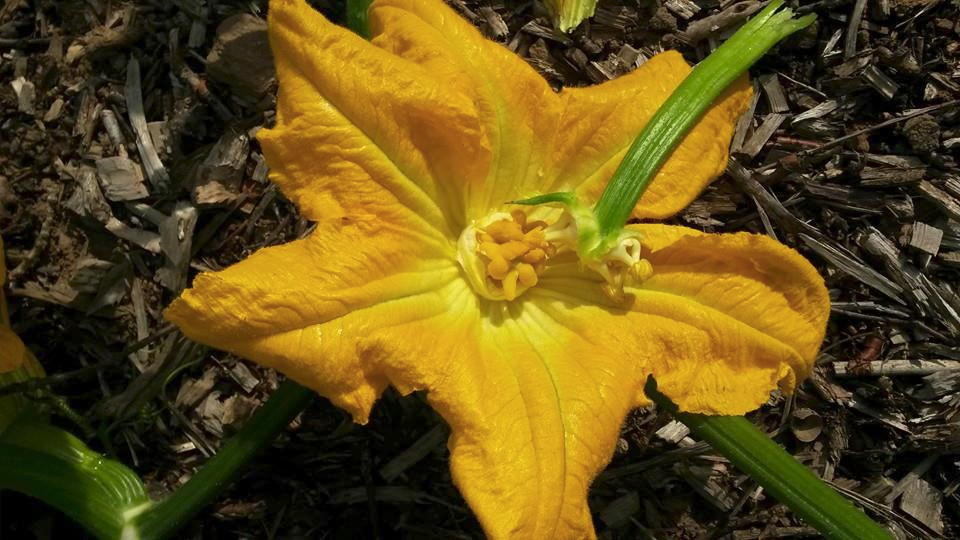
6. REPOSITION SET PUMPKINS. Once a pumpkin has set, its position on the vine becomes extremely important. Most often the stem grows at a very acute angle to the vine. However, for optimal long-term growth, the best position is to have the stem perpendicular to the vine. If yours is not at right angles to the vine naturally, move it gradually for about a week until it is in that position. Be careful, because at this early-stage pumpkin may still abort or you may damage the fragile stem.
7. SELECT THE MOST PROMISING PUMPKIN. If one plant has three strong vines, you could have as many as seven or eight pumpkins set and growing by mid-July. N It is important to choose the best pumpkin and remove the rest. Measure each pumpkin’s circumference at the widest point weekly or daily with a measuring tape. Choose the one that’s growing fastest. Also, keep an eye out for the optimum shape. Young pumpkins that are round and especially tall grow the largest.
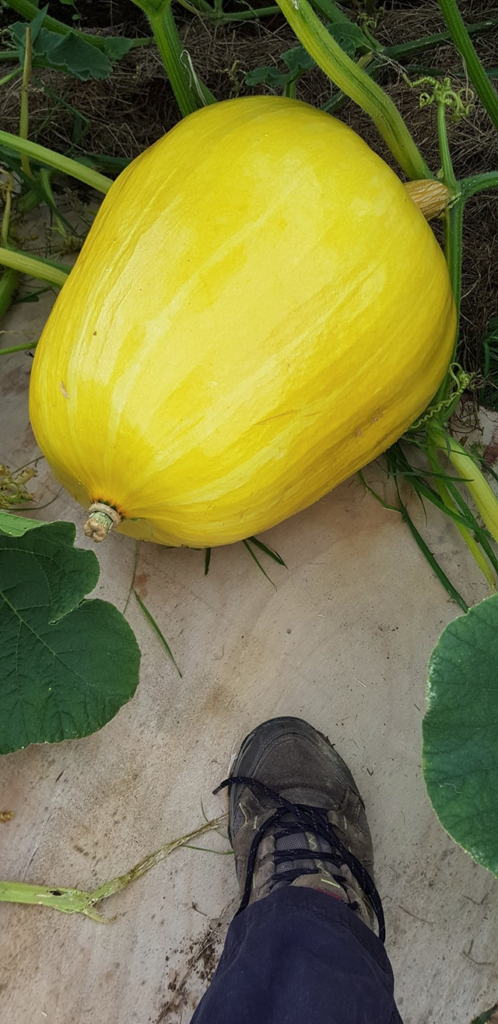
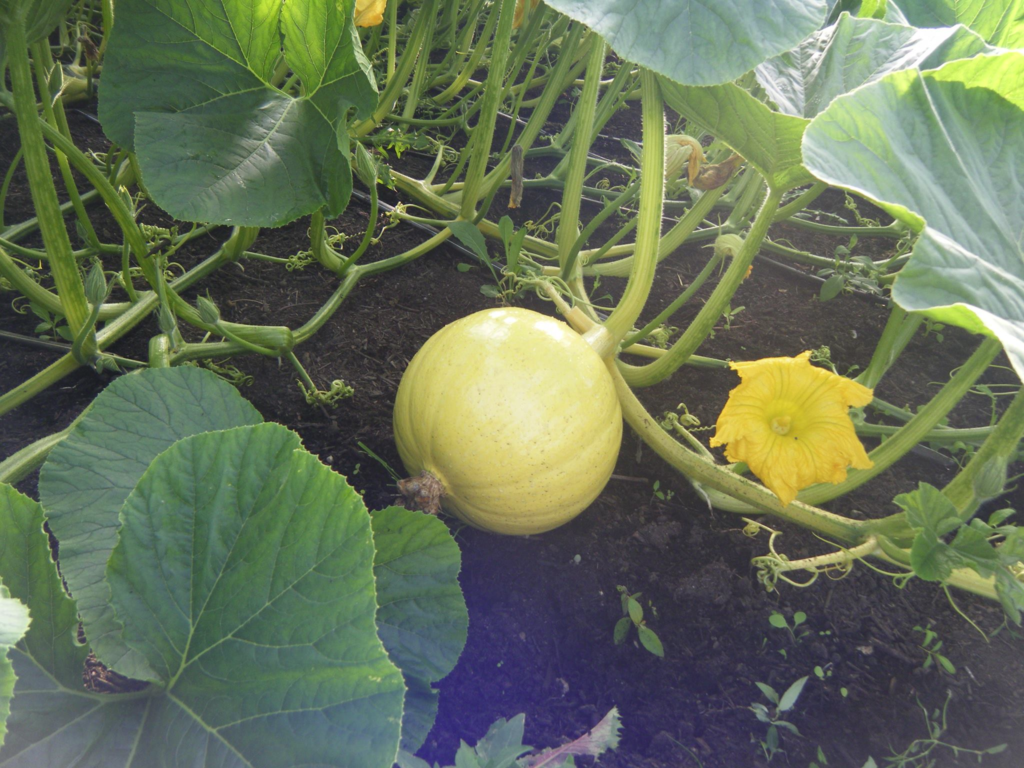
8. PRUNE VINES. Begin pruning vines early in the season to discourage random growth and an out-of-control patch. Prune each main vine when it has reached 10 to 12 feet beyond a set fruit. If you have a pumpkin on a vine that is 10 feet from the main root, cut the end of that vine once it is 20 to 24 feet long. Let side shoots off the main vines get no longer than eight feet before cutting off tips. Train side shoots so they are perpendicular to the main vine to accommodate access to the vines and pumpkins. Bury the ends of cut vines to reduce water loss.
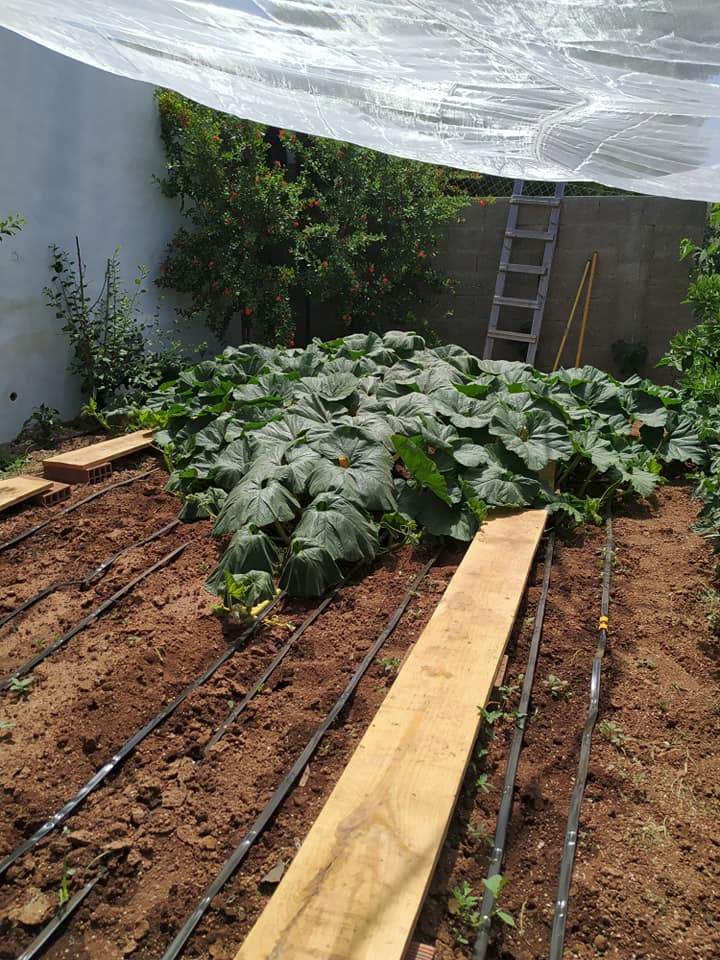
9. FEEDING. During the growing season, the feeding needs of pumpkins can be met by applying water-soluble plant foods once or twice a week over the entire plant area. Give seedlings a fertiliser that stresses phosphorus, such as 15-30-15. Shift to a more balanced formula, such as 20-20-20, once fruits are set.
By late July, use a formula that stresses potassium, such as 15-11-29. Some competitive growers will over feed. In my view, too much feed can hurt more than help. If the pumpkins start growing too fast, they will literally tear themselves from the vine and explode. Remember…. “Slow and steady wins the race.” Remember this whenever you feel the urge to overfeed
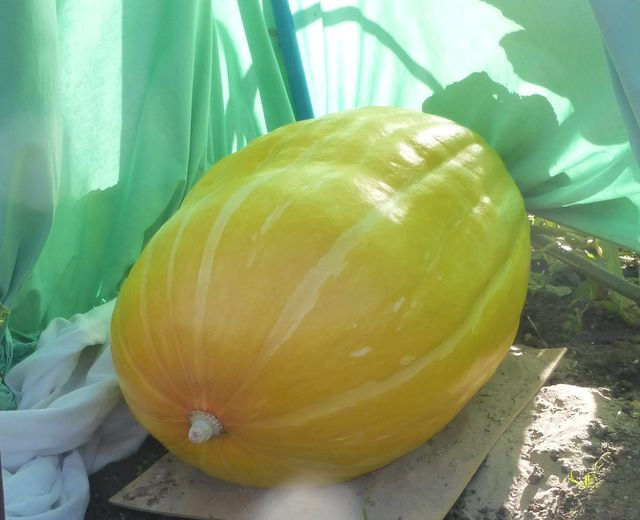
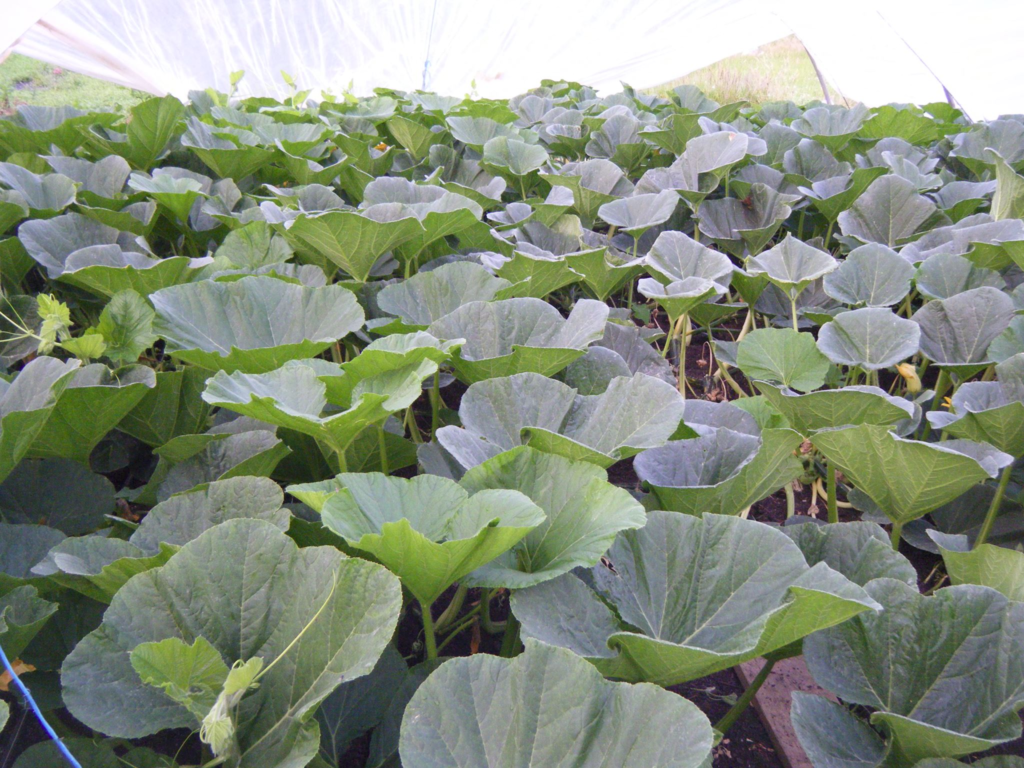
10. KEEP TRACK. Measure your pumpkins at least weekly. A pumpkin can grow up to six inches in circumference in a 24-hour period. Measure the circumference of your pumpkins first parallel to the ground around the entire pumpkin, from blossom end to stem. Next, measure over the top in both directions: from ground to ground along the axis from stem to blossom end, then perpendicular to the stem-blossom-end axis. Add these three measurements together, then multiply by 1.9 to give an estimate of the pumpkin’s weight.
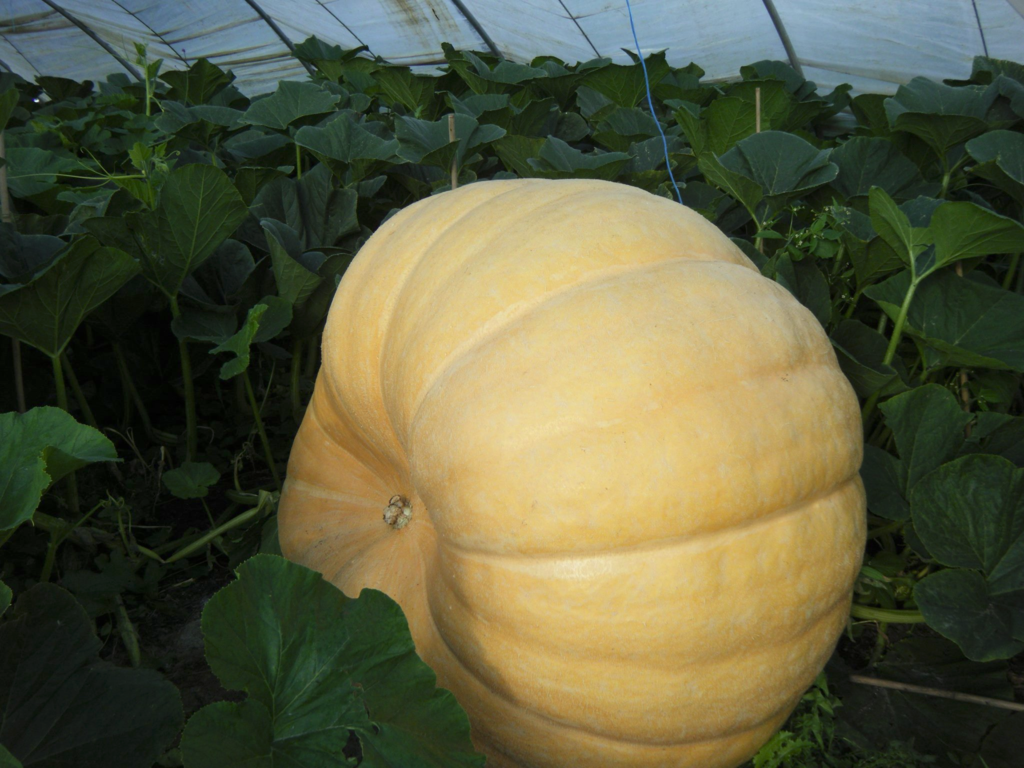
11. TOOLS – Know someone with a Telehandler. Here’s Ben White’s Monster Pumpkin
